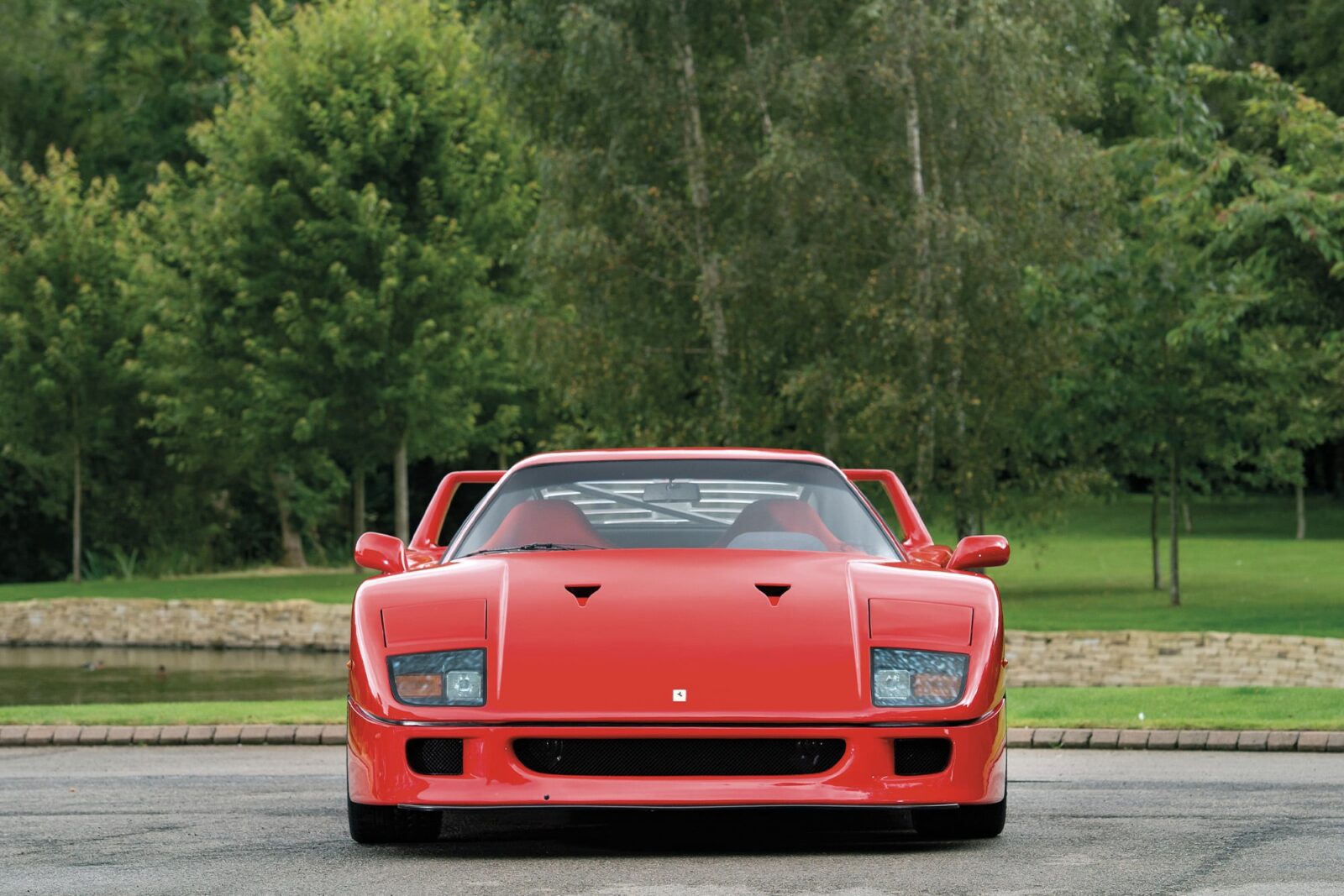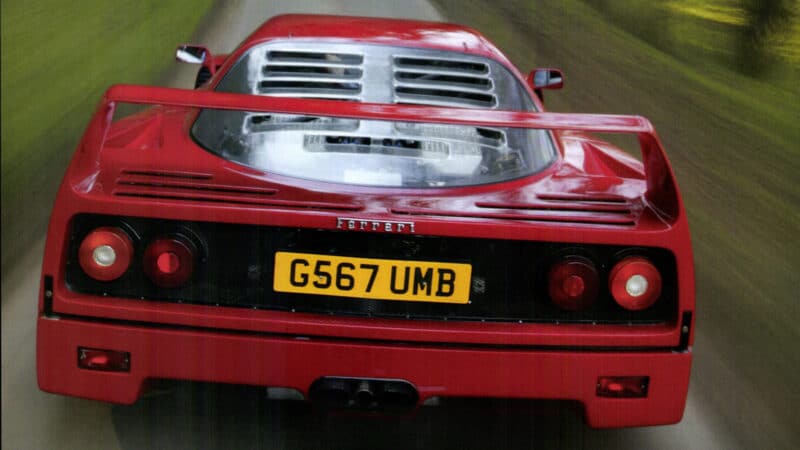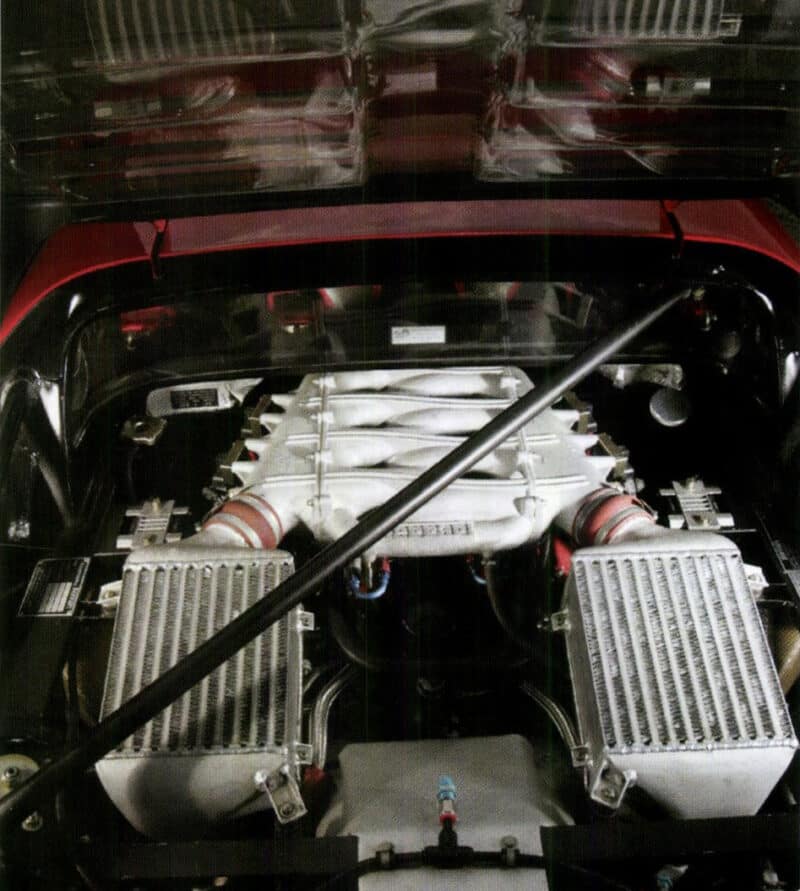But when I turned the corner and saw it sitting there in the sunshine with that wolfish look on its face I worried no more. Others might be quicker, but for sheer, predatory purpose, this one still beats the lot.
Can it really be 20 years since this aluminium, Kevlar and carbon fibre masterpiece was first revealed to the world? I don’t think anything has made me feel older. It was, of course, Enzo Ferrari’s last car. And while we know he was at best uninterested in most of his road cars and often little short of contemptuous about those who drove them, he clearly made an exception for the F40. In his unforgettable biography of Ferrari, Brock Yates reports the Old Man as saying it was so fast, ‘you’ll s**t yourself.’
Many reasons lay behind its creation. At the time Ferrari was engaged in a horsepower struggle with Porsche, his 400bhp 288GTO being clearly eclipsed by its 959’s high-tech 450bhp, so something with a little extra was clearly called for. Nominally the F40 had 478bhp, but it didn’t take much tickling to raise that figure far further. Secondly, Ferrari’s 40th anniversary was fast approaching and you didn’t need to be as prescient as Enzo to know he’d be unlikely to be around to enjoy the 50th. Finally, and most persuasively, the 288GTO project had proven that there were a great many Ferrari owners who quite liked the idea of being invited to own a supercar made very special even by Ferrari standards. And that then meant he could charge big money for it.
And this time there’d be none of this ultra-low volume nonsense. Although there was talk was of a nice round 400 F40s being built (still more than the 272 examples of 288GTO created), that figure soon rose to 700 and then to four figures. In the end around 1100 were made. At a quoted list price even in 1987 of £193,000, its bean-counter appeal was clear.
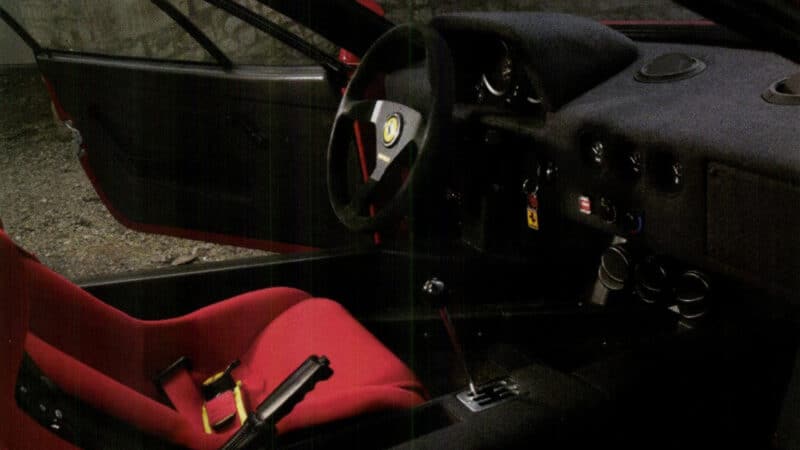
The F40 has a sparse interior — and for good reason
Charlie Magee
But it was not, as some contended at the time, a cynical fund-raising device designed to prise cash out of foolish buyers. Those looks wrote no cheque the car could not cash in full. The structure was a steel spaceframe clad entirely in carbon fibre, just five years after McLaren had introduced the material into F1. The engine was a 2.9-litre twin-turbo V8 that could trace its technical roots back to the V8 Ferrari had used for all its junior road cars since the mid-1970s, but in fact owed rather more to that of Lancia’s LC2 Group C car. Its suspension, of course, came courtesy of a double wishbone at each corner while the tyres were as large as any seen on a road car at that time – the rear P-Zeros were 345/35ZR17s covering 13in-wide Speedline wheels.
Much had been learned from the 288GTO. For while that car was gorgeous, fully trimmed and even reasonably civilised to cover distances, dynamically it was badly flawed. Its power came in with a bang its chassis was ill-equipped to handle and on the limit it asked more questions than many drivers had prepared answers for.
So while there was some degree of component carryover between the two cars, their philosophies would be entirely different: the F40’s shape – both on top and underneath the car – was dictated above all by the need for aerodynamic stability at the huge speeds it would reach. Its interior would be completely stripped to save weight. You’d step across a wide sill and fall down into a carbon-fibre channel. The door handle would be a piece of wire, the white-on-black instruments the simplest ever used in a Ferrari. There would be no music, no air conditioning, no electric windows or mirrors. Heating would be controlled by two small dials which would have looked cheap in a Fiat Panda, and the only concession to practicality was that it was surprisingly easy to see out of – so long as you were travelling forwards. Reversing an F40 is something you’d emigrate to avoid.
Looked at objectively, it would seem that the F40 was a thinly-veiled racing car, but this would appear not to be the case. A racing version called the F40LM was built, not by Ferrari but well known preparers Michelotto. Promisingly, Jean Alesi came third in the IMSA GT category on its debut at Laguna Seca in 1989 but while LMs continued to race sporadically into 1990 and claim more podium finishes, they never actually won a race.
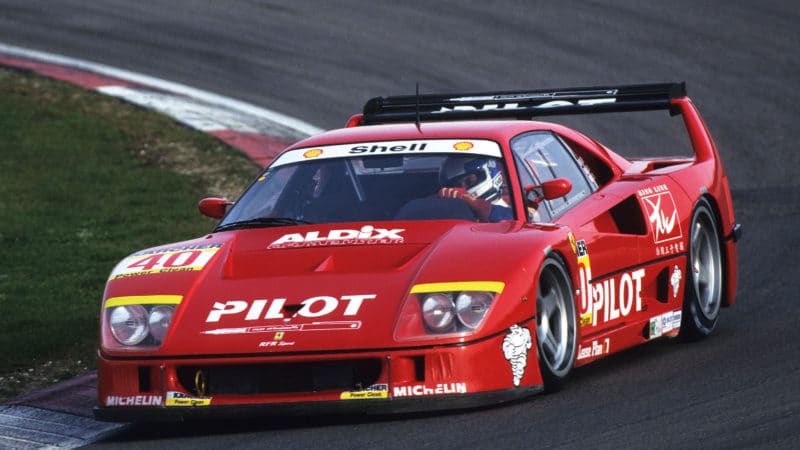
The racing version of the F40 only saw sporadic success
DPPI
But the F40’s competition career, which had appeared over in 1990, came back with a vengeance in 1994, three years after the last one had been built, thanks to the BPR Global GT series. Michelotto once more provided the goods, this time in the form of the F40GTE and, despite its now obsolete design and the advent of cars like the McLaren F1, it ran at the front for all three seasons of the BPR, winning races every year and being denied many more times by mechanical frailty. Anyone doubting the raw speed of the F40 should bear in mind that in 1996, its last competitive year, it claimed fastest lap in seven of the 11 rounds. Not bad for a car homing in on its tenth birthday.
